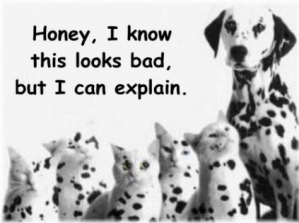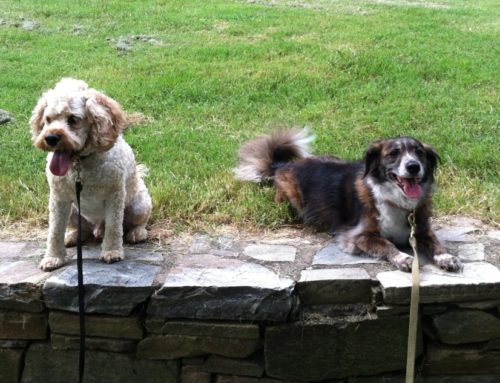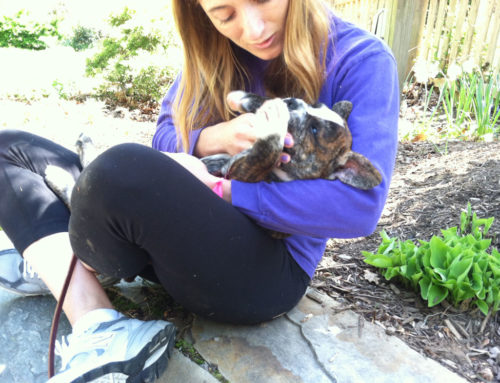Every once in a while, during class instruction we get a question that usually requires time, thought and even a thorough discussion about who/what/when/why the dog parent is asking.
However, when we are in the middle of teaching a group class, it’s a challenge to give a proper answer. So this series of posts will be the Classroom Response.
A Classroom Response should be efficient, to the point, thoughtful and open for discussion at a later time.
So when a student recently asked if a dog being left intact until adulthood was causing behavior problems, this was the Classroom Response:
“Generally, for family dog purposes, we find spay/neutering to be helpful with behavior when we are seeing intense responses. For example, the hormones do no invent behaviors out of no where, but they can intensify them and exacerbate the problem. Generally peaking around 18 months, hormones are great if I plan to show my dog for conformation, or have the best influence on growth plates should I have a performance dog (competitive level agility, etc).
If I have a family dog, with a solid obedience foundation and any intense behavior that I was struggling with, then I would strongly consider neutering much earlier than 2yo.
Those hormones will also increase the desire to roam and seek a female in heat. These adolescent males become escape-artists when hormonally charge and scent a female. Again, I want to decrease that roaming behavior.
Neutering is not a quick fix and if the unwanted behaviors are well-reinforced then they will continue whether neutered or not. In the end, neutering is part of the picture but it isn’t the whole picture.
Happy to answer any questions and hope that was helpful.
Best, Lisa”
What were your considerations for spay/neutering your dog? Why or Why not?




I aim to have my dog do his business in our yard, and I immediately bag it and throw it out. Sometimes on a walk, he will poop, and I will immediately clean it up–but we are on someone else’s property. I have not had anyone complain, but your post raises the question — how to take walks and avoid pooping on other people’s lawns? Thank you.
Allyson
Great question, Allyson. I’m sure by now you have some certainty about where your dog goes poop and what they prefer to poop on. Using some of that predictability to your advantage, you release or ask for “Go Potty” in the areas that you want your dog to eliminate instead of allowing them to freely roam for the entire duration of the walk.
For example, my dog Jack likes to pee or poop on things that are upright. I can pass 50 things in my neighborhood that are upright. I do not walk slowly and allow him to investigate all 50 and choose one or two. I pass all the ones that 1) are property such as someone’s car or lawn ornament 2)landscaping so he doesn’t take out someone’s shrub to get just the right spot 3) are inconvenient or unsafe such as along a fence where there is a dog going nuts.
Move along quickly to the spot you want him to eliminate and linger there, generally walking in a circle around that space. Should he hit the end of the leash to reach someone’s front lawn I walk in a circle and then return back to the space I want the dog to eliminate. If he needs some more walking time, then move along in your walk and select a spot up-ahead to allow him to eliminate. Encourage him to go by using his potty cue or casually begin to repeat “Go Potty” so your dog learns it’s time.
Thanks for the question!